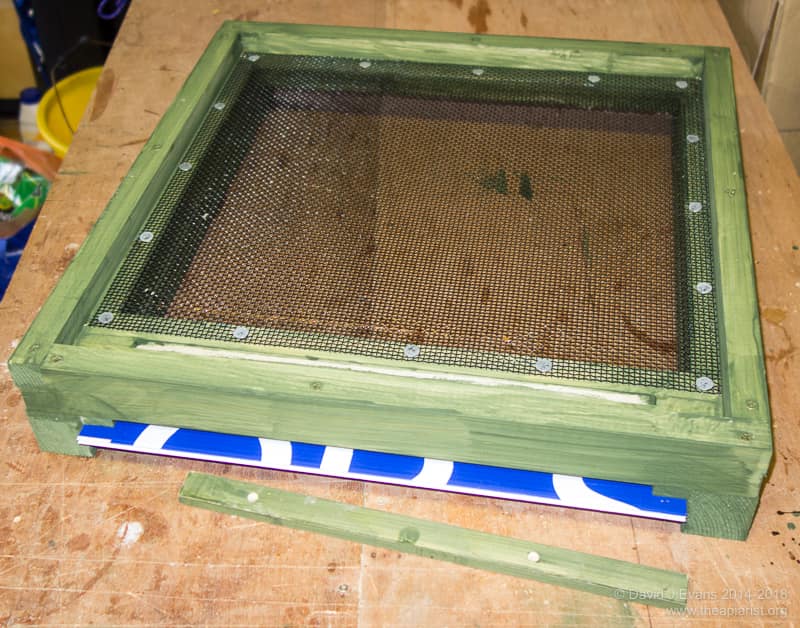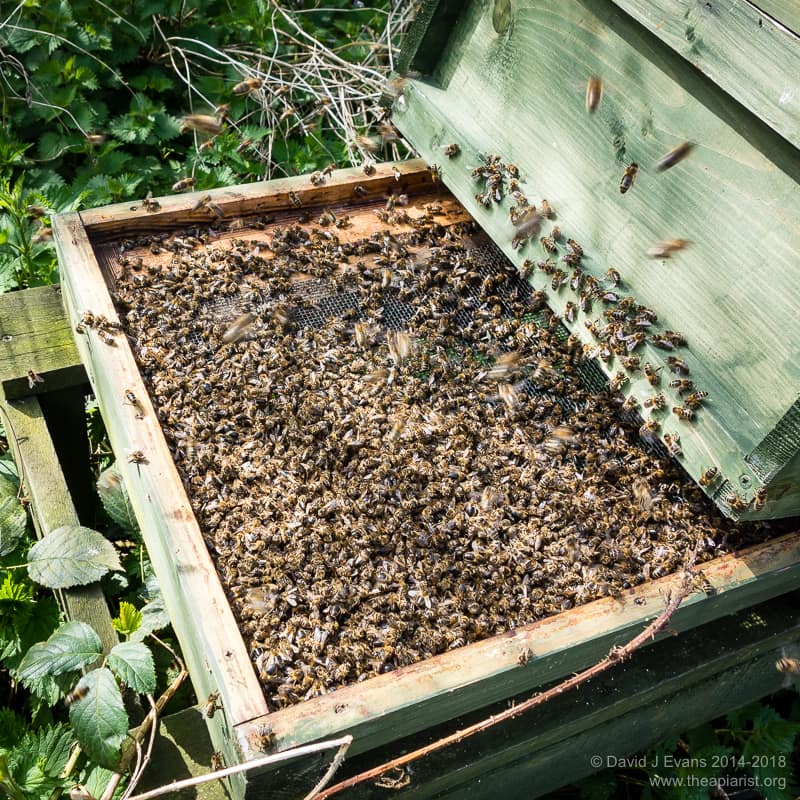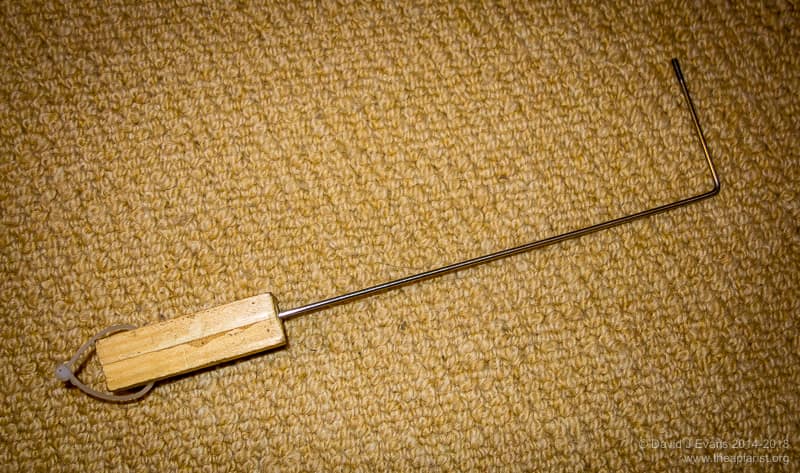Winter checks for kewl floors

Kewl floor …
The majority of my full colonies are on kewl floors. Some call these ‘floors with underfloor entrances‘, which is a bit more of a mouthful. These floors have narrow ‘L’ shaped entrances; the bees are forced to access the brood box through a 8-9mm high or wide slot, negotiating a 90º bend en route. For the majority of the season these offer more than enough advantages to easily outweigh their slightly more difficult construction. These advantages include:
- integral (and readily replaceable) Correx landing board
- no need for mouseguards – even determined mice can’t negotiate an 8mm right angle
- guard bees can occupy both the landing board and brood box entrance so far fewer problems with robbing or wasps (and if these are really a problem a simple 9mm lathe can be pushed into the entrance leaving a single bee gap at one end)
- easy to seal for transport
Other users of these floors also claim the absence of draughts is a benefit but, since they also have open mesh floors, I don’t think this is likely to make much of a difference.
I’m only aware of three disadvantages of this type of floor.
- they are not suited to the Varrox-type OA vaporisers i.e. the passive heating pan that is designed to be pushed through the hive entrance. This is not an issue if you use a Sublimox-type ‘active’ vaporiser I’ve described previously
- bees can be confounded by the gap under the landing board when reorientating to these floors, though there are quick’n’dirty fixes to this and it’s only ever an issue for a few days. For the same reason, clipped queens might – on returning to the hive – miss the entrance and end up underneath the floor (though this happens with floors and normal entrances)
- during long cold winters the entrance can become blocked with bee corpses – the only really significant problem and easily avoided
Bring out your dead

Blocked Kewl floor …
There can be a high loss of bees from the colony during long cold winters. This is generally not an issue during the depths of winter, but as the weather warms slightly and the colony becomes more active – and, inevitably, the overwintering bees get older – the attrition rate rises. If the weather still isn’t warm enough for the corpses to be removed they can end up blocking the entrance. Twice in recent years I’ve had colonies trapped inside. In both cases these went into the winter as strong double-brood colonies and – due to work commitments – weren’t checked for 4-6 weeks in late January-early March. In both cases I managed to save the colonies, but they were severely stressed by the situation, with signs of Nosema, and needed mollycoddling for several weeks at the start of the season proper.
Fortunately there’s an easy solution. On your weekly apiary winter checks (or however frequent they are) push a bent piece of wire into the entrance, turn it to project up through the vertical part of the entrance slot and slide it along the full width of the hive to ensure the entrance is clear. Any old piece of wire should be suitable as long as it it short enough not to foul the bottom of the frames. For a few years I used an easily-lost piece of wire coat hanger. More recently I added a handle to a stainless steel bicycle spoke … with a little hook so it can hung up in a “safe place” (which, of course, is no guarantee whatsoever that it won’t be lost 🙁 ).

Kewl floor unblocker …
Join the discussion ...